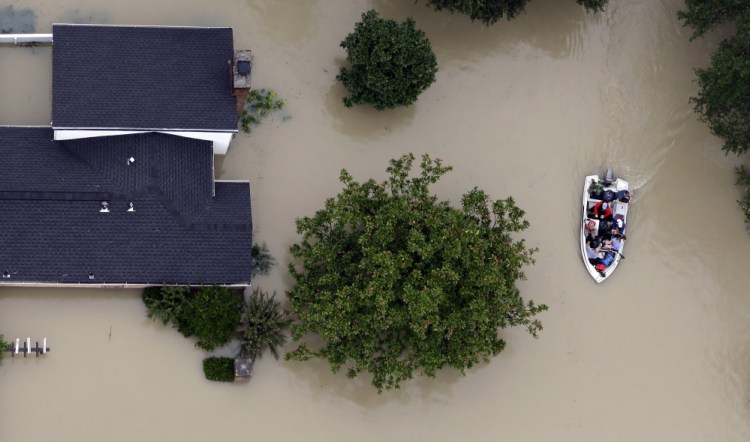Following Hurricane Harvey’s hit on Texas, and with Hurricane Irma threatening Florida, let’s acknowledge one reason for the vulnerability of residents of low-lying coastal Sunbelt regions: The federal government has been paying people to locate there.
Not explicitly, of course. But an abundance of inexpensive housing is a big attraction. And a big factor in the low cost of housing in the Houston area is that developers are free to build almost anywhere, including marshy, low-lying areas where land is cheap.
The chance of being swamped deters some people, but the government offers flood insurance to pay for repairing and rebuilding. The owners of a Houston home that flooded 16 times in 18 years got over $800,000 in payments – for a house worth less than $115,000.
Houston, according to the National Wildlife Federation, accounts for more than half of all the properties that are flooded and paid for over and over. Yet development in these precarious spots continues apace.
“If you’re going to build a new structure in the flood zone, the private sector can insure it. And if they can’t insure it, then why is the public subsidizing the risk?” asks Craig Fugate, Federal Emergency Management Agency chief during the Obama administration.
It’s a big subsidy. Thanks to past storms, the flood insurance program has a $25 billion deficit. The Congressional Budget Office found that coastal counties at risk from tropical storms make up just 10 percent of all the counties with federal flood insurance policies – but generate 75 percent of the claims and most of the deficit.
In 2012, Congress passed a modest package of sensible changes that would have raised costs to the flood-prone. But two years later, feeling the political heat, lawmakers backtracked.
Homeowners in areas that are expected to flood every 100 years have to buy flood insurance if they want federal insured mortgages. But they pay rates far lower than the risks warrant.
That gap deprives builders of incentives to stay out of low-lying areas that are vulnerable to flooding. It also promotes the destruction of wetlands that could reduce flooding. Oh, and it helps to tilt migration toward vulnerable coastal regions like those of Texas and Florida.
Send questions/comments to the editors.



Success. Please wait for the page to reload. If the page does not reload within 5 seconds, please refresh the page.
Enter your email and password to access comments.
Hi, to comment on stories you must . This profile is in addition to your subscription and website login.
Already have a commenting profile? .
Invalid username/password.
Please check your email to confirm and complete your registration.
Only subscribers are eligible to post comments. Please subscribe or login first for digital access. Here’s why.
Use the form below to reset your password. When you've submitted your account email, we will send an email with a reset code.